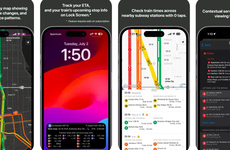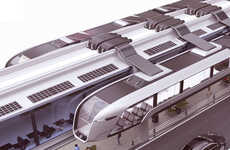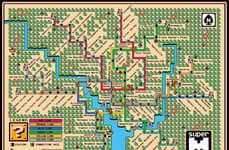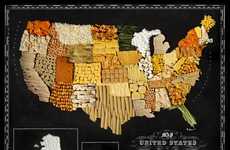
The Time-Scale Commuter Rail Map Shows How Long Rides Can Be
Meghan Young — January 11, 2013 — Art & Design
References: stonebrowndesign & fastcoexist
The Time-Scale Commuter Rail Map focuses on an important detail that has until now been neglected when it comes to transit map designs: Time. While evenly spaced stations may look appealing, they are far from informative when it comes to knowing how long it takes to get from destination A to destination B. Nevertheless, this design, if adopted, does give that information.
Designed by Peter Dunn, the Time-Scale Commuter Rail Map re-imagine's Massachusetts Bay Transportation Authority’s maps for the commuter rail system in Boston, which is known as the T. While similar to traditional maps that depict train routes snaking out from central nodes at North and South stations, the Time-Scale Commuter Rail Map additionally incorporates concentric circles. These circles indicate the length of time it will take from one station to the next.
Designed by Peter Dunn, the Time-Scale Commuter Rail Map re-imagine's Massachusetts Bay Transportation Authority’s maps for the commuter rail system in Boston, which is known as the T. While similar to traditional maps that depict train routes snaking out from central nodes at North and South stations, the Time-Scale Commuter Rail Map additionally incorporates concentric circles. These circles indicate the length of time it will take from one station to the next.
Trend Themes
1. Temporal-based Transit Maps - A new trend in transit maps that prioritizes time as a key factor in design, creating a more informative experience for commuters.
2. Concentric Circle Route Design - A route design trend that incorporates concentric circles to visually indicate the length of time it takes to travel between stations, improving accessibility to transit information.
3. Real-time Commuting Information - An emerging trend in commuter information that seeks to provide real-time information about travel times, making it easier for commuters to plan their journeys.
Industry Implications
1. Transportation - The transportation industry can leverage temporal-based transit maps and concentric circle route design to improve the customer experience and make transit information more accessible.
2. Technology - Technology companies can develop real-time commuting information systems that integrate with transit maps to provide enhanced information to commuters.
3. Design - Designers can contribute to the trend by developing new and innovative ways to visually represent transit information, creating a more usable and informative experience for commuters.
0.6
Score
Popularity
Activity
Freshness























